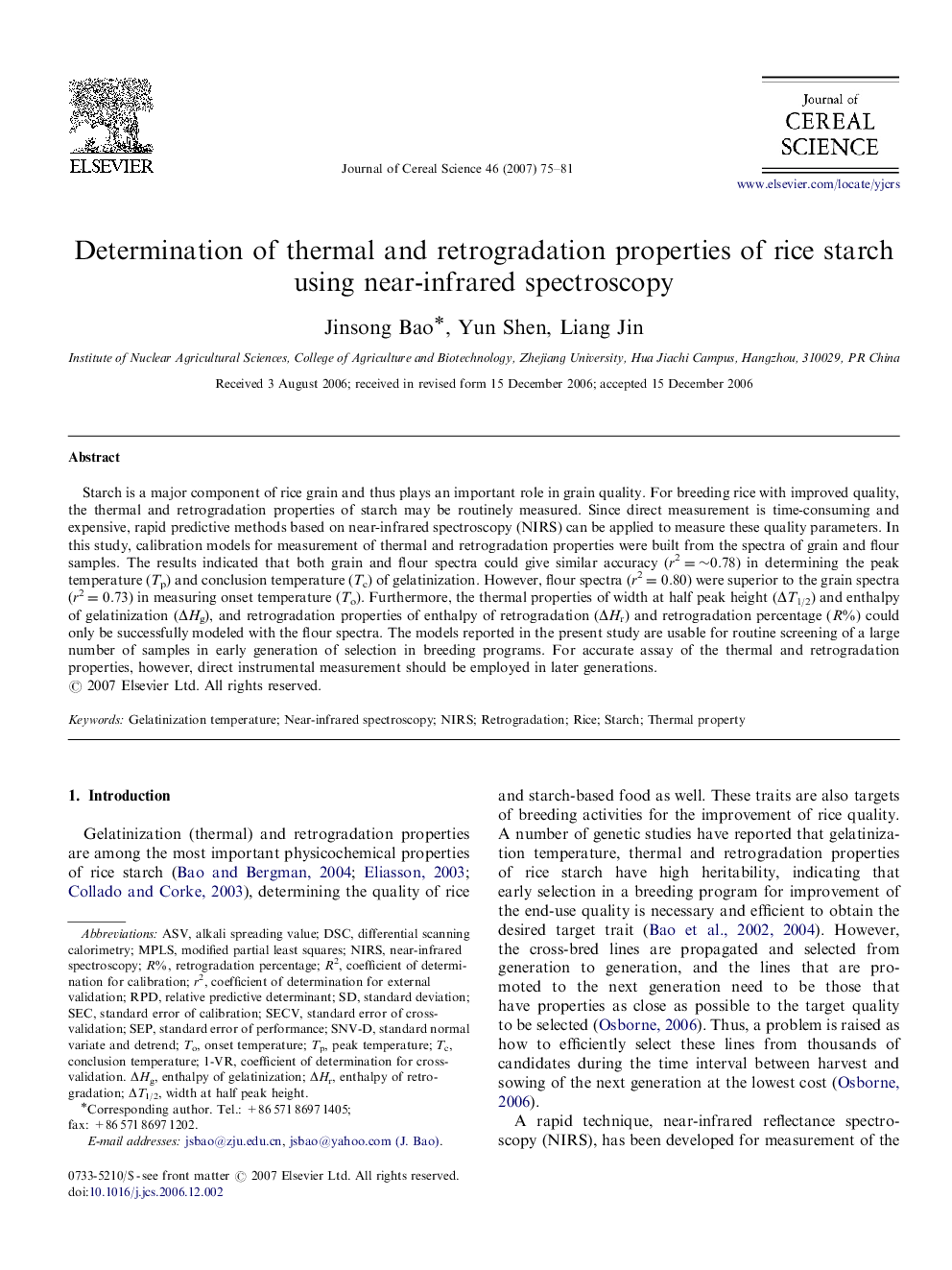| Article ID | Journal | Published Year | Pages | File Type |
|---|---|---|---|---|
| 4516512 | Journal of Cereal Science | 2007 | 7 Pages |
Starch is a major component of rice grain and thus plays an important role in grain quality. For breeding rice with improved quality, the thermal and retrogradation properties of starch may be routinely measured. Since direct measurement is time-consuming and expensive, rapid predictive methods based on near-infrared spectroscopy (NIRS) can be applied to measure these quality parameters. In this study, calibration models for measurement of thermal and retrogradation properties were built from the spectra of grain and flour samples. The results indicated that both grain and flour spectra could give similar accuracy (r2=∼0.78) in determining the peak temperature (Tp) and conclusion temperature (Tc) of gelatinization. However, flour spectra (r2=0.80) were superior to the grain spectra (r2=0.73) in measuring onset temperature (To). Furthermore, the thermal properties of width at half peak height (ΔT1/2) and enthalpy of gelatinization (ΔHg), and retrogradation properties of enthalpy of retrogradation (ΔHr) and retrogradation percentage (R%) could only be successfully modeled with the flour spectra. The models reported in the present study are usable for routine screening of a large number of samples in early generation of selection in breeding programs. For accurate assay of the thermal and retrogradation properties, however, direct instrumental measurement should be employed in later generations.
